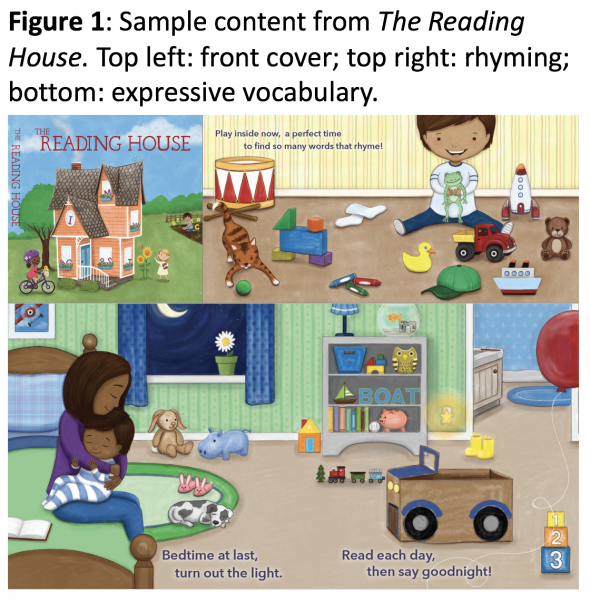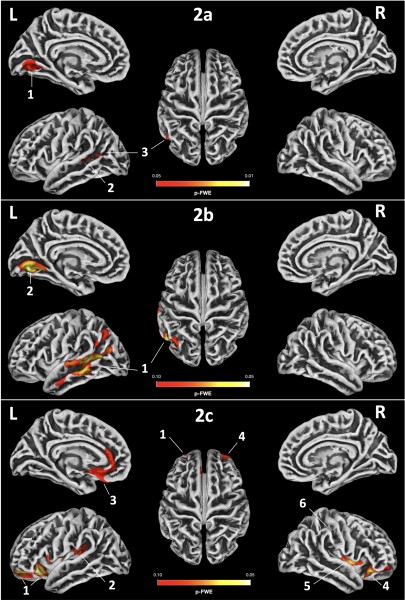
Texas Border Business
Newswise — A study published in the journal Pediatrics expands validation evidence for a new screening tool that directly engages preschool-age children during clinic visits to assess their early literacy skills. The tool, which is the first of its kind, has the potential to identify reading difficulties as early as possible, target interventions and empower families to help their child at home, according to researchers at Cincinnati Children’s Hospital Medical Center.
The Reading House (TRH) is an assessment for ages 3-5 based on a specially designed children’s book, which was developed by John Hutton, MD, and his team at Cincinnati Children’s. Screening takes five minutes and gauges performance levels for ages 3-4 and 4-5. It addresses a significant gap in ways to efficiently and directly screen early literacy skills. The tool, which is intended to be fun for the child, could be used in primary care or preschool settings. Early screening is particularly important for children from disadvantaged backgrounds.

“While developmental screening is a mainstay of pediatric practice, there is no established standard to assess reading readiness and identify children at-risk early,” said Hutton, director of the Reading & Literacy Discovery Center at Cincinnati Children’s. “As a result, many children arrive at kindergarten unprepared to learn to read, especially from minority and economically impoverished backgrounds – estimated at over 50% of children from impoverished backgrounds in the U.S. and over 25% overall.”
The screener measures core skills typically emerging in the preschool age range, including vocabulary, rhyming, alphabet knowledge and print concepts (how books work). All are skills predictive of reading success and often implicated in reading difficulties, according to Hutton.
After screening, the family is given the book to take home and read together, helping address the important question: “What should I do to help my child?” Possibilities include enrollment in preschool as well as building nurturing home-reading routines.

The study involved 70 healthy children—34 boys and 36 girls—between 3 and 5 years old from various socioeconomic status backgrounds. The children completed standardized assessments of important literacy skills: composite, vocabulary, rhyming and rapid automatized naming (how quickly they can access linguistic information about objects, letters or words). Fifty-two of these children also successfully completed magnetic resonance imaging (MRI), including measurement of cortical thickness, or the gray matter surface of their brains. Thicker cortex, particularly in left-sided areas supporting language and reading, has been associated with higher skills that are predictive of reading outcomes.
These findings are the first of their kind, building on a series of “firsts” involving relationships between reading and brain development in preschool-age children published by the research team from Cincinnati Children’s.
“We found significantly thicker gray matter cortex in the left-sided areas of the brain in children with higher TRH scores, which align with cortical thickness patterns found in older children and adults with higher reading skills,” Hutton said. “This is an important neurobiological correlate of screened skills at this formative age, when the brain is growing rapidly.”
Higher scores on TRH were also strongly related to higher vocabulary, rhyming and rapid naming scores, adding to validation evidence for the TRH measure.
An additional finding involved substantial differences in cortical thickness patterns for children in poverty versus those not in poverty related to higher TRH scores.
“We found a less mature or ‘strain’ pattern and thinner cortex overall in the subsample of children from impoverished backgrounds, which is a potential biomarker of lower readiness and early adversity often found in such children,” Hutton said. “By screening early during pediatric clinic visits, especially in practices serving disadvantaged families, we can hopefully target effective interventions that help children better prepare for kindergarten and improve reading outcomes — literally ‘shaping their brains to read.’ ”
The study was funded by a Procter Scholar Award from the Cincinnati Children’s Research Foundation.












